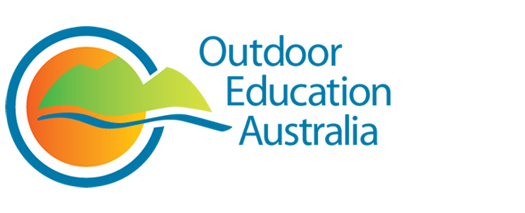JOEE 27 (1)
JOEE April 2024 Issue
JOEE special issue: Outdoor health and nature-based solutions: research, practice & policy
This special issue is compiled by the Australian Association for Bush Adventure Therapy (AABAT). Outdoor Health (OH) and Nature-based Solutions (NbS) encompass a wide range of evidence-informed outdoor practices that include nature as a key setting, an integral element, or partner in the delivery of intentional human and environmental health services.
Across six papers, around 40 academics and researchers share their stories of innovative processes or outcomes in nature-based practice with specific cohorts—for example, children, adolescents, adults, families or special target groups. The editors of JOEE are keen to elevate the sector to a more cohesive and integrated level of academic maturity and professional debate by bringing disparate bodies of knowledge together to maximise health and wellbeing outcomes
Reminder: To read these full articles you need to log-in to the OEA Digital Library
LOG-IN LINK in the menu on the right (at the top) or near bottom if viewing on mobile device.
Addressing ethical issues in outdoor health practice: a scoping review
Ben Knowles (pic), Pauline Marsh, Jacob Prehn and Hazel Maxwell )
 This article reviews the diversity within the Australian Outdoor Health sector. It identifies over 50 ethical topics found within the literature, and several themes and subthemes that can be used as lenses for practice issues. The authors invite practitioners to embed ethical deliberation into their daily practice and explore ethical practice issues across various systemic levels from the coal face of practice to entire systems of operation. The paper finishes by highlighting the need for a comprehensive ethical practice framework to guide safe and effective practice into the future.
This article reviews the diversity within the Australian Outdoor Health sector. It identifies over 50 ethical topics found within the literature, and several themes and subthemes that can be used as lenses for practice issues. The authors invite practitioners to embed ethical deliberation into their daily practice and explore ethical practice issues across various systemic levels from the coal face of practice to entire systems of operation. The paper finishes by highlighting the need for a comprehensive ethical practice framework to guide safe and effective practice into the future.
Bridging the evidence gap: A review and research protocol for outdoor mental health therapies for young Australians
Emily J. Flies (pic), Anita Pryor, Claire Henderson-Wilson, Megan Turner, Jessica Roydhouse, Rebecca Patrick, Melissa O’Shea, Kimberly Norris, Angela Martin, Pauline Marsh, Larissa Bartlett, Mostafa Rahimi Azghadi & Amanda Neil
 Drawing from extensive input, this paper proposes a research protocol for comparing youth mental health ‘treatment as usual’ (indoor individual counselling and indoor group-based therapies) with outdoor mental health therapies for young Australians. With young people (aged 16–24 years) reporting the highest prevalence of mental health problems in Australia, and globally over 60% of all lifetime cases of mental health disorders identified as emerging by 25 years of age, the provision of acceptable and accessible youth mental health services is a critical system imperative.
Drawing from extensive input, this paper proposes a research protocol for comparing youth mental health ‘treatment as usual’ (indoor individual counselling and indoor group-based therapies) with outdoor mental health therapies for young Australians. With young people (aged 16–24 years) reporting the highest prevalence of mental health problems in Australia, and globally over 60% of all lifetime cases of mental health disorders identified as emerging by 25 years of age, the provision of acceptable and accessible youth mental health services is a critical system imperative.
This article argues that to increase mental health care options and enable mainstreaming of outdoor treatments, evidence gaps need to be addressed. It presents a research protocol to better understand the unique benefits and systemic potential of ‘outdoor talking therapies’, and potentially support the mental health of the mental healthcare workforce.
Measuring Nature-Based Health Interventions (NBHI) – a rapid review of instrumentation and outcomes
Arianne Reis, Tonia Gray, Jeff Mann (pic), Jessica Mallinson, Manisha Katnoria, William Seach & Nicole Peel
 The review outlined the breadth of instrumentation employed to measure effectiveness of NBHIs on health and wellbeing. It settled on 167 articles that met the relevant criteria, after review of 14,385 records from three databases. Settings included Garden/Horticulture, Blue Spaces, Urban Green Spaces, Wild Nature, and Camps/Residential. In the process 336 measurement tools were used, and only 29 were specifically designed to assess NBHIs. The large majority of the 29 tools investigated mental health domains and the effectiveness of NBHIs to improve psychological factors and physical, behavioural, and healthy eating outcomes. It recommends that tuture research explore how the tools and outcome measurements could be used more effectively in NBHI settings.
The review outlined the breadth of instrumentation employed to measure effectiveness of NBHIs on health and wellbeing. It settled on 167 articles that met the relevant criteria, after review of 14,385 records from three databases. Settings included Garden/Horticulture, Blue Spaces, Urban Green Spaces, Wild Nature, and Camps/Residential. In the process 336 measurement tools were used, and only 29 were specifically designed to assess NBHIs. The large majority of the 29 tools investigated mental health domains and the effectiveness of NBHIs to improve psychological factors and physical, behavioural, and healthy eating outcomes. It recommends that tuture research explore how the tools and outcome measurements could be used more effectively in NBHI settings.
The potentiality of nature to tug at our heartstrings: an exploratory inquiry into supportive affordances for emotion-focused family therapy in the outdoors
Carina Ribe Fernee (pic), Sophia Louise Hjorth Wahlgren & Lise Katrine Jepsen Trangsrud
 Much research outlines the link between nature contact and well-being, with nature-based solutions becoming increasingly accepted in mental health care and recovery. Evidence of nature-based family therapy, however, is still relatively scarce. This paper reports on a clinical trial conducted in Southern Norway and compares indoor and outdoor provision of emotion-focused multi-family therapy.
Much research outlines the link between nature contact and well-being, with nature-based solutions becoming increasingly accepted in mental health care and recovery. Evidence of nature-based family therapy, however, is still relatively scarce. This paper reports on a clinical trial conducted in Southern Norway and compares indoor and outdoor provision of emotion-focused multi-family therapy.
In their exploratory inquiry, the authors explore the myriad ways nature may influence four core principles in emotion-focused therapy, including (a) emotion awareness, (b) emotion regulation, (c) reflection on emotion, and (d) emotion transformation. They generate a preliminary account of how nature pulls at our heartstrings and offers a supportive environment for the novel provision of emotion-focused family therapy.
Informing future directions for climate anxiety interventions: a mixed-method study of professional perspectives
Clare Pitt, Kimberley Norris & Gretta Pecl (pic)
 This article contends that to strengthen future generations’ motivation for being connected to nature, we need to address contemporary society’s’ omnipresent fear of climate change. We also must explore different ways of supporting people with pathological anxiety developed by climate change and the vast amount of information (and misinformation) concerning this threat to our existence.
This article contends that to strengthen future generations’ motivation for being connected to nature, we need to address contemporary society’s’ omnipresent fear of climate change. We also must explore different ways of supporting people with pathological anxiety developed by climate change and the vast amount of information (and misinformation) concerning this threat to our existence.
Despite reports of increasing levels of climate change related distress, there remains limited evidence regarding effective interventions for individuals and communities. This study aims to contribute to this discussion by presenting opinions from 230 study participants who self-identified as having a professional interest in climate anxiety and who also suggested potential anxiety interventions.
Mapping the landscape: surf therapy program delivery
Mary Brennan (pic), Helen J. Stain and Jamie Marshall
 This paper discusses surf therapy as a potent experience for therapeutic benefit in a variety of contexts and populations. In their study, Brennan and colleagues examined the core aspects of surf therapy in 33 programs. Their findings revealed international similarities across target population, program delivery, target age groups, recruitment, structure, geographic delivery and challenges.
This paper discusses surf therapy as a potent experience for therapeutic benefit in a variety of contexts and populations. In their study, Brennan and colleagues examined the core aspects of surf therapy in 33 programs. Their findings revealed international similarities across target population, program delivery, target age groups, recruitment, structure, geographic delivery and challenges.
Areas of diversity included support staff in terms of roles or qualifications, therapeutic aims, outcome measures and therapeutic structures. Similarities highlight surf therapy as a promising nature-based solution.


